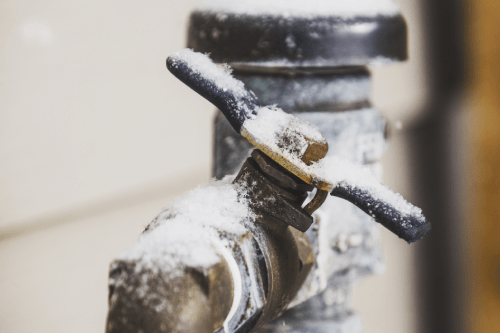Crucial Tips to Prevent Frozen Pipes in Cold Weather: Specialist Insights
Crucial Tips to Prevent Frozen Pipes in Cold Weather: Specialist Insights
Blog Article
What are your opinions concerning Prevent Frozen Pipes ?

Winter can wreak havoc on your plumbing, particularly by freezing pipes. Right here's exactly how to stop it from taking place and what to do if it does.
Introduction
As temperatures decrease, the risk of frozen pipelines boosts, potentially resulting in costly repair work and water damage. Understanding how to prevent frozen pipes is vital for home owners in cool environments.
Comprehending Frozen Pipelines
What causes pipelines to freeze?
Pipelines freeze when subjected to temperature levels below 32 ° F (0 ° C) for extended periods. As water inside the pipelines freezes, it increases, taxing the pipeline walls and potentially triggering them to burst.
Dangers and problems
Icy pipes can bring about supply of water disturbances, building damage, and costly repairs. Burst pipelines can flooding homes and cause substantial structural damage.
Signs of Frozen Water Lines
Determining icy pipelines early can avoid them from breaking.
Exactly how to determine icy pipelines
Seek reduced water circulation from taps, uncommon odors or sounds from pipes, and noticeable frost on subjected pipes.
Avoidance Tips
Insulating susceptible pipes
Cover pipelines in insulation sleeves or utilize warmth tape to safeguard them from freezing temperatures. Focus on pipes in unheated or external locations of the home.
Heating techniques
Keep indoor rooms adequately warmed, particularly locations with plumbing. Open cabinet doors to enable cozy air to circulate around pipes under sinks.
Safeguarding Outdoor Plumbing
Yard hoses and exterior faucets
Detach and drain garden hoses prior to winter. Set up frost-proof spigots or cover exterior taps with insulated caps.
What to Do If Your Pipes Freeze
Immediate actions to take
If you think frozen pipes, keep taps available to ease stress as the ice thaws. Utilize a hairdryer or towels taken in hot water to thaw pipes slowly.
Long-Term Solutions
Architectural modifications
Take into consideration rerouting pipes far from exterior wall surfaces or unheated locations. Include additional insulation to attics, cellars, and crawl spaces.
Updating insulation
Invest in high-grade insulation for pipelines, attic rooms, and wall surfaces. Correct insulation assists maintain regular temperature levels and minimizes the risk of icy pipes.
Conclusion
Preventing frozen pipelines calls for aggressive actions and fast reactions. By understanding the causes, indicators, and safety nets, home owners can secure their pipes throughout cold weather.
5 Ways to Prevent Frozen Pipes
Drain Outdoor Faucets and Disconnect Hoses
First, close the shut-off valve that controls the flow of water in the pipe to your outdoor faucet. Then, head outside to disconnect and drain your hose and open the outdoor faucet to allow the water to completely drain out of the line. Turn off the faucet when done. Finally, head back to the shut-off valve and drain the remaining water inside the pipe into a bucket or container. Additionally, if you have a home irrigation system, you should consider hiring an expert to clear the system of water each year.
Insulate Pipes
One of the best and most cost-effective methods for preventing frozen water pipes is to wrap your pipes with insulation. This is especially important for areas in your home that aren’t exposed to heat, such as an attic. We suggest using foam sleeves, which can typically be found at your local hardware store.
Keep Heat Running at 65
Your pipes are located inside your walls, and the temperature there is much colder than the rest of the house. To prevent your pipes from freezing, The Insurance Information Institute suggests that you keep your home heated to at least 65 degrees, even when traveling. You may want to invest in smart devices that can keep an eye on the temperature in your home while you’re away.
Leave Water Dripping
Moving water — even a small trickle — can prevent ice from forming inside your pipes. When freezing temps are imminent, start a drip of water from all faucets that serve exposed pipes. Leaving a few faucets running will also help relieve pressure inside the pipes and help prevent a rupture if the water inside freezes.
Open Cupboard Doors
Warm your kitchen and bathroom pipes by opening cupboards and vanities. You should also leave your interior doors ajar to help warm air circulate evenly throughout your home.

I was shown that editorial about 6 Ways to Prevent Frozen Pipes from someone on a different domain. Are you aware of somebody else who is fascinated about the niche? Please feel free to promote it. I am grateful for your time. Kindly visit our site back soon.
Book With Us Today! Report this page